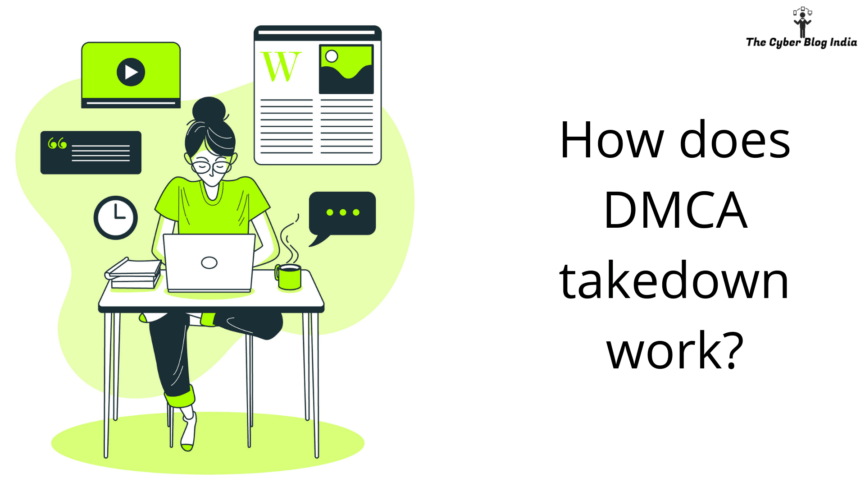How does DMCA takedown work?

If you are a website owner, one of your worst nightmares will be another website copying your content. Content replication can result in copyright violation due to copyright protection available to rightful copyright owners. One such law is the Digital Millennium Copyright Act (DMCA) in the United States. I recommend you to read the article we have written on DMCA before proceeding further.
I am sure you have come across websites with plagiarised content. What will you do when someone copies your article and publishes it on their website? Takedown is one of the remedies available with a copyright owner. As per Google’s transparency report, they have received more than 5.6 billion requests for URLs infringing copyright.
What is DMCA takedown?
First things first, every copyright owner has the right to process a takedown notice against a website owner for copyright violation if their content is used without permission. The DMCA takedown procedure involves sending a takedown notice to the service provider requesting them to take down the infringing content. The service providers can be a search engine like Google or a hosting service provider like GoDaddy.
However, one must understand that there are possible uses without authorisation that are not considered infringement. This is called the Fair Use Doctrine. It is an exception doctrine extending to limited purposes such as news reporting, teaching, criticism, and research.
What is the procedure for DMCA takedown?
Before starting the DMCA takedown procedure, you can contact the website owner and request them to take the copied content down. There are good chances that the website owner will remove the content. If the website owner does not respond to you despite your efforts to contact them, you can proceed with filing a DMCA complaint.
1. Understand where to file a complaint: You will need to find where the website has hosted the content. Tools like WhoIs can help you identify the domain registrar and hosting provider for the website in question. Most service providers have a dedicated page (or form) for reporting DMCA violations.
2. Contents of a DMCA takedown complaint: You will require the following information to file a DMCA complaint:
- Location of infringing material (URLs)
- Your contact information (Phone number, email, address)
- A statement saying that the website in question has used your content without your authorisation.
- A declaration specifying that the information you have given is correct.
- Electronic/physical signature
3. Time taken in responding to a DMCA complaint: This largely depends on the location of the copied content and the service provider’s speed in processing the incoming DMCA requests. Since DMCA is a US law, service providers outside the US may not accept a DMCA takedown complaint.
What if someone files a takedown request against you?
You will receive notifications regarding any DMCA complaints filed against you. Do not ignore such emails regarding DMCA takedown notices. If you believe that this complaint is a mistake, you can subsequently file a DMCA counter-notice. Section 512(f) of the DMCA Act aims to deter false infringement claims by imposing liability on parties making a false claim. For a counter-notice, your response should include information such as:
- Location of URLs
- Your contact information (phone number, email, address)
- A statement clarifying that the service provider has taken down the content due to misidentification
- You may need to give your consent to the jurisdiction of a federal court
- Acceptance of service of process from the party who submitted the takedown notice
- Electronic/physical signature
Endnotes
So far, we have discussed copyright violations and the takedown procedure that the service providers are bound by. Can there be instances where a service provider denies accepting a takedown request? Google elaborates on a case where they rejected the request filed by a Ukrainian politician. The politician had complained about his images being used in several articles criticising his performance in the office. Google rejected this complaint as this use did not amount to copyright infringement. So, delisting or taking down is not always the case as service providers may not entertain frivolous complaints and requests. Therefore, one must ensure that they file DMCA complaints only for genuine reasons.
Featured Image Credits: People vector created by storyset – www.freepik.com
